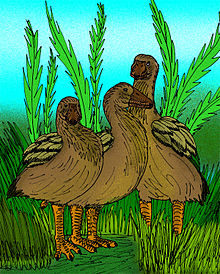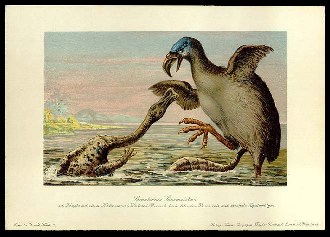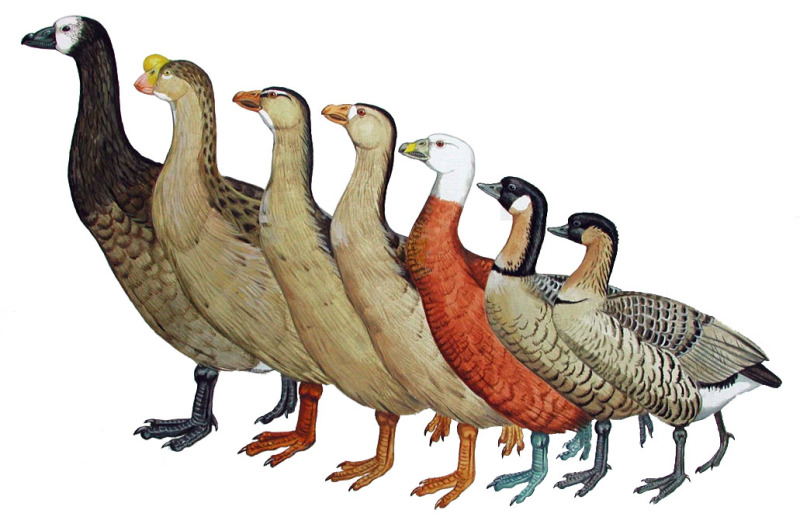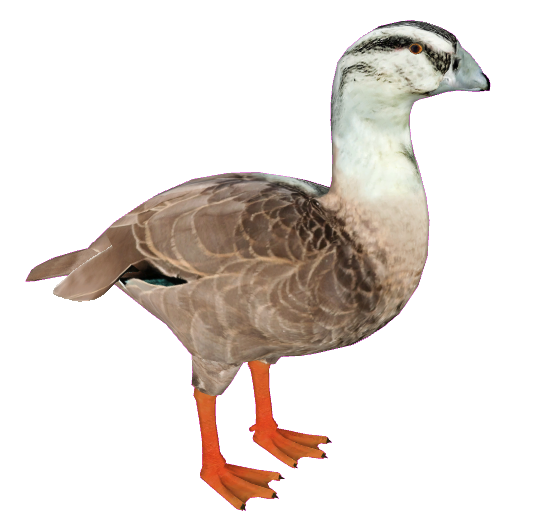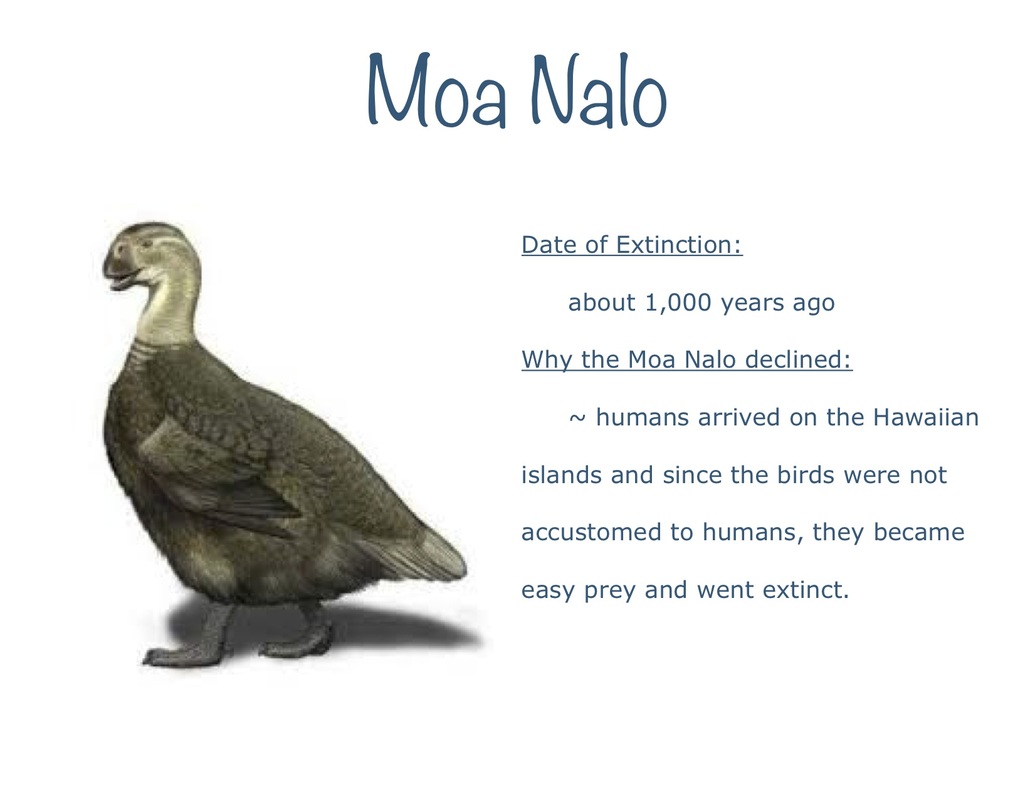Moa-nalo
Kauai Moa Nalo ( Chelychelynechen quassus ) Reconstruction based on beak shape and relationship
The Moa - Nalos were flightless endemic ducks ( Anatidae ) of the Hawaiian Islands.
The word Moa - Nalo is made up of Hawaiian " Moa " for poultry and " nalo ", which means lost or forgotten.
Way of life
They were the largest herbivores Hawaii, who took a similar ecological niche as the giant tortoises of the Mascarene Islands, the Seychelles, Aldabra and the Galapagos Islands before the arrival of humans. They were specialized to digest plant fibers in the posterior large intestine.
The Kauai - Moa - Nalo ( Chelychelynechen quassus ) had a wide and high beak, like the mouth of a turtle for browsing of herbs. The longer, bent down and pointed beaks of the other species had bony pseudo teeth to eat grass and twigs. As a defense against these birds and the Hawaiian goose belonging to the lobelia plants plants of the genus Cyanea spines and different looking leaves ( Heterophyllie ) have developed.
Description
The shoulder girdle and the wings were extremely reduced, even more than in the giant geese of the genus Cnemiornis on New Zealand's South Island. Also the breast bone crest was totally absent. The hind legs were trained accordingly stronger. Your bones are all very big and strong. Key and coracoid are clearly regressed. In some of the species, the coracoid is either the shoulder blade with which it forms a right angle or adherent to the sternum. The leg is very poorly developed and may be missing in a population. The wing bones are very small compared to the size of the birds and often significantly deformed. Radius and ulna are often fused into a single bone, the gap between the two parts of the bone Carpometacarpus is often closed and this bone is often fused with the first phalanx of the big finger. The beaks are large, strong and unusually shaped.
Outer systematics
Because of the extreme regression of the wings and the shoulder girdle a systematically correct classification of the species is difficult. Olson and James suspected in 1991 due to the shape of the syrinx to believe that there must be at the Moa - Nalos rather ducks ( Anatinae ) than about geese ( Anserinae ). Livecey in 1996 by examination of the skeleton to the conclusion that they are a sister group of geese and swans. Has since been established by genetic studies in 1999 that their closest living relatives are the dabbling ducks ( Anantini ).
Distributional history
The Moa Nalos probably split over three million years ago by the other dabbling ducks ( Anantini ) from. This means that they probably then Kauai and / or Oahu reached and later a way that was not entirely flightless, emigrated to Molokai, from where they could emigrate in the Pleistocene walking on the islands of Lanai and Maui, the then Molokai a coherent island formed. Hawaii could never settle because it had long been completely unable to fly in the development of this island.
They were exterminated by the Polynesian settlers as one of the first birds of the islands about 1600 years ago.
Species
- The Kauai - Moa - Nalo ( Chelychelynechen quassus Olson & James, 1991) lived on Kauai.
- The Moa - Nalo ( Thambetochen chauliodous Olson & Wetmore, 1976 ) lived on Molokai, Maui and Lanai.
- The Oahu- Moa - Nalo ( Thambetochen xanion Olson & James, 1991) lived on Oahu.
- The Maui - Moa - Nalo ( Ptaiochen pau ) lived on Maui.




